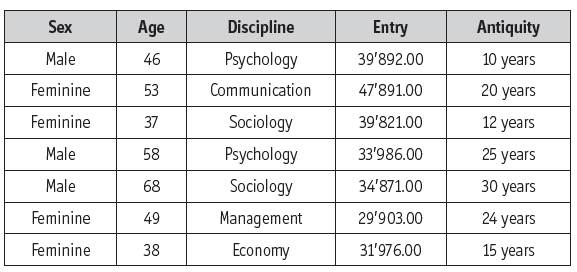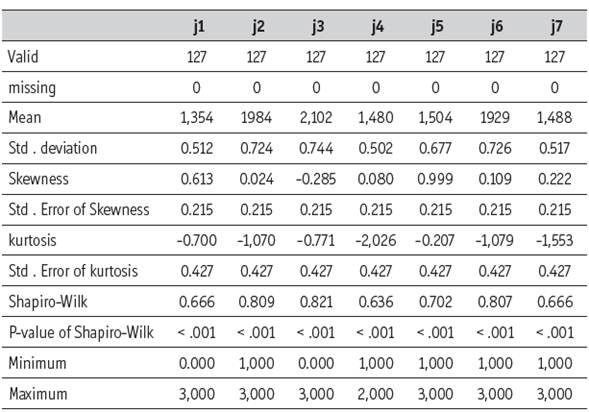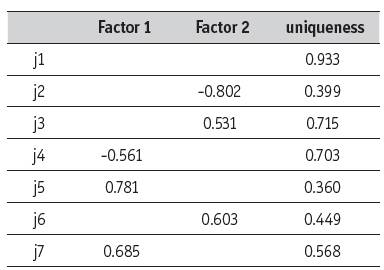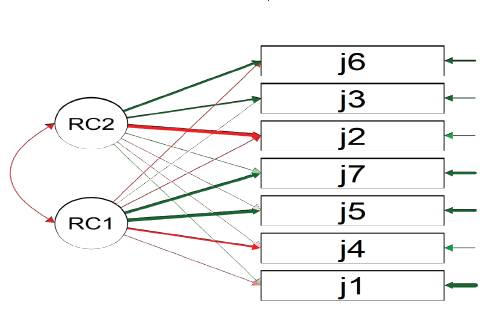1. INTRODUCTION
By January 2022, the pandemic has led to the death of 6 million people worldwide, although governments recognize underreporting deaths from atypical pneumonia that could reach 20 million (García, 2020). The Mexican government recognizes 300,000 deaths from COVID-19, but its population ministry recognizes a surplus of 300,000 deaths associated with atypical pneumonia (García et al., 2021). The number of deaths associated with the pandemic would reach a total of 600 thousand in Mexico.
Within the framework of the Sustainable Development Goals (SDG), the section concerning water resources recognizes scarcity and insalubrity as water issues that are associated with environmental public health (Hernández et al., 2018). The governments committed to the SDGs direct their policies towards the supply of water in places with scarcity, the sanitation of wastewater to prevent unhealthy conditions, and public investment to counteract an increase in service rates.
The pandemic disrupts the SDGs in terms of water resources and health (Carreon et al., 2017). The relationship between the SDGs and COVID-19 opens the discussion around government risk communication on residential water use (Valdés et al., 2018). The press has disseminated water policies and needs during the pandemic (García et al., 2016). Press releases report on social representations of water resources: Officials recognize an increase in cost and a reduction in service quality (García, 2021). Users demand a greater subsidized or condoned supply in exchange for voting in favor of local candidates.
The relationship between authorities and users of public services has been a central issue on the media agenda (Anaya, 2014). Water resources have been a central issue as a strategic resource for quality of life and subjective well-being in the face of the pandemic (Carreon et al., 2014). Printed media with a national circulation have reported the corruption of local authorities in the increment of deregulated rates (Gomera et al., 2013).
Scarcity, unhealthiness, and famine have been central issues on the public health agenda (Mc Combs, 1996). The press spreads news about millions of children dying from waterborne diseases in countries with a high rate of water scarcity. Intermittent water supply with increasing rates (Gudynas, 2010). Localities spend 20% of their income on the purchase of water products (Pérez & Soler, 2013).
The press attributes responsibilities to the authorities; exonerates users who have regular access to drinking water; justifies the consumption of water in the soft drink and pharmaceutical industries (Martínez et al., 2019). The press sets an agenda around water resources (Carreon et al., 2014). The agenda established by the press results from the exchange of information between the involved agents (García et al., 2016). The differences between the involved parties generate informative biases to justify rate increases, consumerism, conflicts, or restrictive policies of the
water supply (Flores, 2013). The press establishes an agenda that involves the reaction of organized civil society groups against the performance of their authorities regarding the quality of water services. The press reports on the availability of water in reference to local needs (Hernandez et al., 2018). The press spreads closures of avenues, boycotts of pipe installations or kidnappings of water delivery trucks (Vázquez et al., 2017).
The objective of this paper is to explain the theoretical dimensions of the dissemination of the press regarding the water problems of scarcity, unhealthiness, and famine, considering press releases related to local policies and needs in Mexico City during the pandemic.
Are there significant differences between press releases regarding the water problems of scarcity, unhealthiness, and famine in Mexico City during the pandemic?
The premises that guide this research suggest: 1) The pandemic mitigation and containment policies consist of the confinement and distancing of people, redirecting residential water consumption; 2) The water problems of scarcity and insalubrity in Mexico City during the pandemic have modified residential water consumption; 3) The press have publicized residential water consumption based on water problems; 4) The social representations that are built from the dissemination of water problems consist of peripheral symbols of subsidy and forgiveness of local water services; 5) The conflicts between the rulers and the ruled can be explained and anticipated from the social representations of water problems spread by the press.
Social representations are visions of the everyday world that are historically constructed while the diffusion of the media intensifies their audiences (Bustos et al., 2017). The press reduces water policy to opinions, cultivating two logics: verifiability and plausibility of information.
The credibility of information emerges in the social representations of non-expert audiences (García et al., 2016). The data on the pandemic and the intensive use of water to disinfect cutlery, personal hygiene or laundry are credible if images predominate instead of discourses (Lirios, 2005). The verifiability of the information underlies the representations of compared data (Bustos, Juárez & García, 2019). The data on water problems are credible if they are contrasted with other data from other cities in the world.
The credibility and verifiability of information increase the prestige of the press (Valdés et al., 2019). Data on COVID-19 and water problems increase water consumption if users sense the end of the pandemic. On the other hand, if the data refers to a prolonged pandemic in terms of waves of contagion, water consumption decreases because social despair appears.
2. METHODOLOGY
Design: Non-experimental, retrospective, documentary, and exploratory study.
Sample: Press releases of national circulation during the 2019-2022 period, considering the dissemination of water problems; scarcity, unhealthiness, and famine in Mexico City.
Instrument: Delphi inventory. It includes press releases on water problems; scarcity, unhealthiness, and famine in Mexico City. for the 2019-2022 period (see Table 1).
Procedure: Expert judges in water problems and environmental public health evaluated the press releases (see Table 2), granting: 0 for the absence of plausibility and verifiability, +1 for the dissemination of plausibility, +2 for the dissemination of verifiability, +3 for the spread of plausibility and verifiability.
Analysis: Non-parametric distribution with mean, standard deviation was estimated. The null hypothesis test was calculated with chi square. The contrast of the model was performed with the fit and residual parameters.
3. RESULTS
Table 3 shows the descriptive values of the qualifications the expert judges gave to the press releases on the water problems of scarcity, unhealthiness, and famine, considering the diffusion of the press in Mexico City during the pandemic.
Once the non-parametric distribution was established, and the null hypothesis, regarding the significant differences between the press releases, was tested, we proceeded to estimate the relationship matrix between the categories of likelihood and verifiability of the 127 press releases with respect to the ratings of judges (see Table 4).
The results show the prevalence of plausibility and verifiability factors as strategic diffusions of water problems in the COVID era. The tests of adequacy and sphericity of the results to the study sample suggested the contrast of the null hypothesis on the significant differences between the diffusion theory of plausibility and verifiability with respect to the observed data (see Table 5).
Table 5 Kayser Meyer Olkinc Test
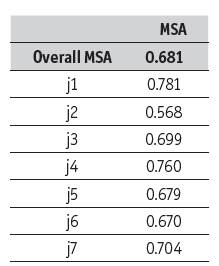
Source: The authors. Sphericity test \x2 = 158.197 (21 df) p < 0.001 J
The exploratory factor analysis model warns that the notes examined by the judges are structured around the diffusion of plausibility and the diffusion of verifiability. In other words, the press disseminates both strategies for readers who believe in data and photographs, as well as for readers who tend to compare information between different sources (see Figure 1).
The fit parameter [ x2 = 2.173 (8 df) p > 0.975; J shows the non-rejection of the hypothesis of significant differences between the theoretical dimensions of plausibility and verifiability with respect to the data obtained.
4. DISCUSSION
The contribution of this work to the state of the art lies in the contrast of a model for the study of the theoretical dimensions of plausibility and verifiability around the diffusion of water problems in Mexico City, considering the framework of the pandemic. The two preponderant factors were found in the qualifications of expert judges on the subject with a sample of 127 analyzed press releases.
In relation to the studies by García (2011); Sandoval et al. (2018); Pérez, Aguilar, and García (2019); where water problems are axes and central themes of the press' agenda, this work suggests that both dimensions of plausibility and verifiability were in force in the review of press releases during the pandemic. Lines of study concerning the effects of the dissemination of plausibility and verifiability in the risk behaviors of the users of the water service will allow anticipating vulnerability scenarios.
Regarding the theory of social representations that place verisimilitude and verifiability as explanatory dimensions of daily life and historicity in water consumption, this study found that both dimensions continued to be valid in the dissemination of the press during the pandemic. Social representations explain the scarcity, and insalubrity of water resources through objectification, anchoring, and naturalization. Objectification refers to water availability as abundant or scarce.
The anchoring suggests that the abundance of water is related to consumption and scarcity to saving. Naturalization considers that the pandemic generated a shortage and therefore saving water was necessary. In the present work, the dissemination of images and data related to water scarcity could have led to savings, but the spread of an extensive pandemic generated an objectification of prolonged confinement and distancing, activating despair. Future studies will corroborate this hypothesis of despair that translates into consumption, not because of an objectification of water abundance, but because of an objectification of an endless pandemic.
5. CONCLUSION
The objective of this work was to reveal the theoretical dimensions of plausibility and verifiability in press releases regarding water problems in the COVID-19 era. The theory proposes that both dimensions, verifiability and plausibility, are related to the spread of scarcity and insalubrity by the press. Verifiability and plausibility have been inferred as responses of readers to information related to natural resources. Water resources considered scarce are preserved, and, if they are assumed to be abundant, they are consumed in excess. The diffusion of the press encourages readers to grant greater credibility to data and images where the scarcity or abundance of water resources is exhibited. That same information encourages readers to move towards comparing sources. The plausibility and verifiability of the water problems explains the representations of the resources. Objectification, anchoring, and naturalization are dimensions that explain information processing. Objectification consists of visualizing the abundance or scarcity of resources. Anchoring lies in associating scarcity with savings and abundance with consumption. Naturalization refers to the promotion of savings or consumption based on abundance and scarcity. Social representations had explained the influence of the press on readers, but the pandemic changed that process. The press that spread a scarcity of resources and an endless pandemic created hopelessness in readers. In the present work, it was found that both plausibility and verifiability continued during the pandemic. The relationship between scarcity and savings was broken. The press systematically spread the scarcity and abundance of water resources, but subject to an endless pandemic. The contrast of the hypothesis that the agenda was modified by the coverage of the pandemic will explain the saving or consumption of water in the residences of readers.















